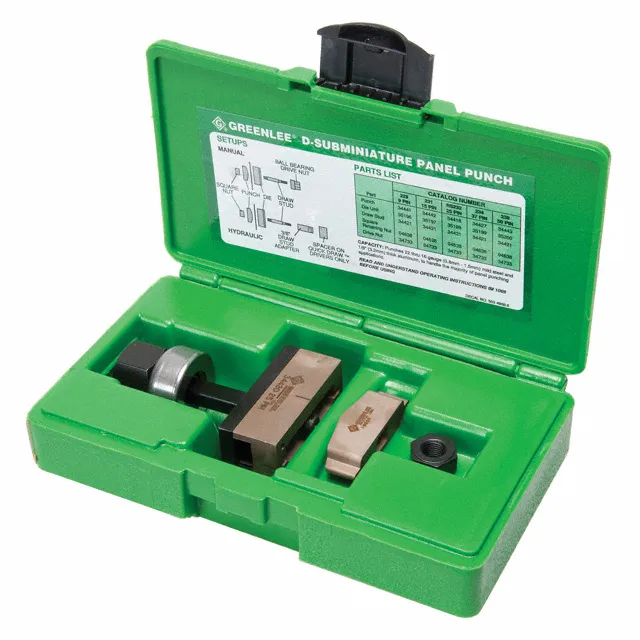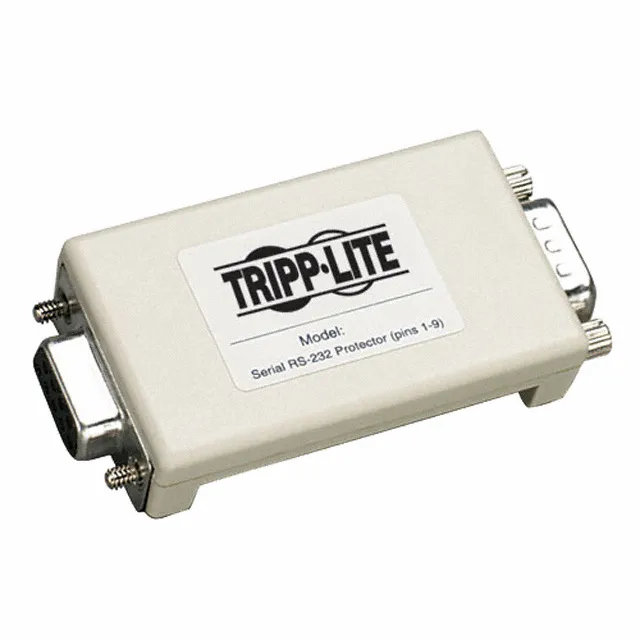RS232 VS DB9: What’s the Differences?
In electronics and computer systems, serial communication is often referred to as RS232 and DB9. There are different types of connectors that are commonly used for RS232 connections, including DB9, which refers to a standard for serial communication. For a better understanding of serial communication protocols and hardware interfaces in different applications, it is essential to understand the relationship between RS232 and DB9. In this article, we will examine the roles, functions, and uses of RS232 and DB9 in the context of serial communication.
What is RS232?

Serial communication between computer systems and electronics is widely implemented using RS232, which stands for Recommended Standard 232. Telecommunications Industry Association (TIA) now known as the Electronic Industries Association (EIA) developed RS232 to specify data transmission characteristics, signal levels, and protocols.
A serial communication protocol sends bits sequentially, one by one, over a single communication line. As a result, it can typically connect devices within a few meters, making it suitable for short-distance connections. Data can be exchanged at various rates with RS232 due to its support for synchronous and asynchronous communication modes.
There are several levels of voltage signaling in RS232, one of which is the signaling level. Voltage levels represent logical highs and lows in traditional RS232 communication. Voltage levels outside of the range of 0 and 1 usually represent logical lows (logic 0) and logical highs (logical 1). Noise immunity and signal integrity are greatly improved with this bipolar signaling method.
What is DB9?

Electrical connectors such as the DB9, or DE-9, are widely used in electronics and computers for serial communication. It has nine pins arranged in a row despite its rectangular form and metal material. In serial communication, the pins serve specific functions such as transmitting/receiving data (TX/RX), grounding (GND), and various control signals. Computers, peripherals, networking equipment, industrial automation systems, and scientific instruments can exchange data using the DB9 connector, a physical interface that connects devices using the RS232 serial communication standard.
As a compact and durable connector, the DB9 has many advantages. The small form factor and metal shell of the DB9 connector ensure reliable connections even in harsh environments, making it an ideal choice for space-constrained applications. Many industries rely on DB9 connectors for serial communications due to their simplicity, reliability, and widespread availability in legacy and modern systems. The use of DB9 connectors has decreased over the years due to the emergence of newer communication standards and interfaces, such as USB and Ethernet.
Advantages and Disadvantages
DB9 Advantages
Compact Size: Compact form factors make DB9 connectors ideal for space-constrained devices and applications that require a small footprint. Circuit boards and equipment enclosures can be packed densely due to its small footprint.
Durable Construction: The DB9 connector features an extremely durable and strong metal shell. The pins are protected from physical damage and external elements such as moisture and dust as a result of this construction.
Widespread Support: Serial communications are commonly conducted using the DB9 connector, which is widely supported by a variety of manufacturers. As a result of this widespread adoption, different vendors' devices are compatible and interoperable with each other.
Simple Installation: The DB9 connector requires no specialized tools or expertise to install and connect, thanks to its standard pinout and intuitive layout. Serial communication systems can be easily designed and implemented because of its simplicity.
Cost-Effective: In serial communication applications, DB9 connectors are cost-effective due to their simplicity and widespread availability. As it has fewer pins and less specialized features, it is often more affordable than connectors with more pins.
Disadvantages
Limited Pin Count: There are nine pins in the DB9 connector, which limits the number of signals that can be transmitted simultaneously in comparison to connectors with more pins. A large number of connections or complex signaling requirements can be a drawback for applications in which this limitation may be a drawback.
Signal Integrity: A noisy environment may compromise the integrity of signals transmitted via the DB9 connector due to its design's susceptibility to electromagnetic interference (EMI). When the DB9 connector is not shielded or grounded properly, signals may be distorted or corrupted, resulting in communication errors.
Legacy Compatibility: USB and Ethernet interfaces, however, have replaced the DB9 connector in many applications, making it a legacy interface. Therefore, modern equipment without DB9 ports may not be able to properly connect to devices using the DB9 connector.
Limited Data Transfer Rate: High-speed data transfer applications are not well suited for the DB9 connector due to its design and signaling characteristics. Newer interfaces that can transmit data at higher speeds may be limited by this interface.
RS232 Advantages
Widespread Adoption: Telecommunications, industrial automation, and computer peripherals all use the RS232 serial communication standard for serial communication. As a result of its widespread adoption, devices from different manufacturers will be compatible and interoperable.
Simple Implementation: Hardware and software overhead are minimal when implementing RS232 communication. This device connects to devices requiring basic serial communications thanks to its asynchronous serial protocol.
Flexible Configuration: There is no need for a shared clock signal with RS232, as both asynchronous and synchronous communication modes are supported. Despite the different transmission speeds of devices, this flexibility allows them to communicate efficiently.
Long Transmission Distances: With RS232, devices can be connected across longer distances within a facility or between locations in the facility over relatively long transmission distances, often several meters in length.
Robust Signal Levels: Signaling levels are used to specify logical highs and lows in RS232, so the protocol is robust against interference and noise. With voltage levels, data can be transmitted reliably even when the environment is noisy, such as in a manufacturing environment.
Disadvantages
Limited Data Transfer Rate: Compared to modern communication standards, data transfer rates are relatively low for RS232 communication. Applications requiring high-speed data transmission may find it insufficient due to its maximum data transfer rate of a few megabits per second.
Limited Number of Connections: A single RS232 network can only accommodate a limited number of devices since it relies on point-to-point communication. The number of connections may have to be increased using serial multiplexers or converters, which are available on the market.
Attenuation and Noise: Due to attenuation and noise, RS232 signals may degrade as transmission distance increases. Long distance data transmission can be unreliable if the signal is not properly conditioned or amplification is not performed, which can result in communication errors and data loss.
Complex Wiring Requirement: To transmit and receive data, as well as to send control signals such as handshaking, RS232 requires multiple wires. When there are multiple connections or long cable runs, complex wiring requirements may result in higher installation and maintenance costs.
RS232 VS DB9: Which one to Pick?
Your application and context will determine whether DB9 or RS232 would be more appropriate. When it comes to serial communications, DB9 and RS232 complement each other rather than compete with each other.
An electrical characteristic, signaling level, and communication protocol are all defined by DB9, as the physical connector of serial communication. As a result of their widespread availability and compatibility with RS232 devices, DB9 connectors are often used for RS232 communication. In choosing between DB9 and RS232, you should take the following factors into consideration:
Physical Connection: In order to connect to a serial port, you'll need to choose a connector type like DB9 if your application requires a physical connector. Since DB9 connectors are compatible with RS232 devices, they are often used for RS232 communication.
Communication Standard: RS232-compatible devices must be compatible with RS232 signaling levels and protocols if you are working with them. Physical connections should be made with DB9 connectors in this case.
Application Requirements: You should identify the specific needs of your application, including the data transfer rate, frequency, number of connections, and distance of transmission, as well as conditions such as environmental conditions and compatibility with existing equipment. These requirements should be taken into consideration when choosing a connector and communication protocol.
Future Compatibility: The USB and Ethernet interfaces are examples of newer communication standards that can be helpful to your application. Data transfer speeds, compatibility, and functionality of newer technologies may be improved by more advanced technologies relative to RS232 and DB9 connectors.
Wrapping Up
As RS232 and DB9 serve different purposes within a serial communication system, there is no point in choosing one over the other. An RS232 connector is a physical connector used for serial communication, while RS232 is the standard protocol which defines its electrical characteristics and communication protocols.
A serial communication system consists of RS232 and DB9 components, which work well together. A serial communication protocol is defined by RS232, while a physical connector is provided by DB9 for connecting serial devices. Data transfer speed, data transmission distance, and future scalability are factors to consider when choosing between RS232 and DB9. The decision regarding whether to use RS232 or DB9 in serial communication systems is based on the demands of your application.
Digital Comparator and Magnitude Comparator Guide
The Transmission System and Its Function
Human-Machine Interface(HMI) Technology [Explained]
What TLV3201AQDCKRQ1 Voltage Comparator is and How It works
IRF540N MOSFET :Principle and Pinout
DC Transmission: Types, Applications & Advantages
How to Test Automotive Relays (Guide)
Introduction to Flash Memory
What is a Memory Card? Types, Work, and Applications
ACS712 Current Sensor:Principle,Features and Applications










